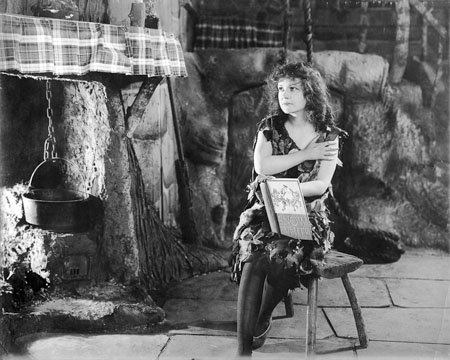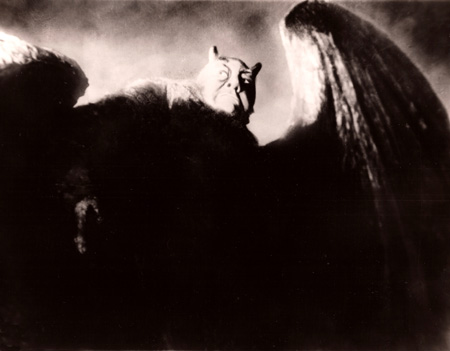“The San Francisco Silent Film Festival’s (SFSFF) one-day winter program has become a welcome tradition, helping silent film fanatics endure the long months between the organization’s main festival held each July,” begins Michael Hawley. “While last year’s winter event took the form of a triumphant mounting of Abel Gance‘s Napoleon at Oakland’s Paramount Theatre, this year it’s back to the Castro Theatre for a single 13-hour marathon of silent era classics.” Happening today. Michael previews Silent Winter 2013‘s five programs: “a silent Snow White, a trio of Buster Keaton shorts, a Douglas Fairbanks blockbuster, Mary Pickford‘s last silent and F.W. Murnau‘s Faust—are all SFSFF premieres and I can’t imagine missing out on any of them.”
“Silent Winter’s earliest (1916) and latest films (1927) are both buoyed by charismatic leading ladies,” notes Cheryl Eddy in the Bay Guardian: “Marguerite Clark, in J. Searle Dawley‘s Snow White, and Mary Pickford in Sam Taylor‘s My Best Girl. Clark, who found early fame as a Broadway star, was already in her 30s by the time film acting became a viable career option. No matter—she’s believably girlish as the princess with ‘skin white as snow,’ hated by her jealous stepmother, whose own beauty comes courtesy of witchcraft. (Dig the proto-Witchiepoo who helps the conniving queen in her various evil schemes, and her giant kitty helper, too.) A teenage Walt Disney saw the film in 1917 and made animation history with the same story 20 years later—though his heroine lacks Clark’s easy effervescence.”
The Examiner‘s Sean Martinfield talks with the festival’s artistic director, Anita Monga, about the restoration of the print of Snow White, found in the Netherlands, while Michael Guillén talks with her about a wide range of topics, including a favorite of hers, Buster Keaton, “an absolute genius of cinema. And I’m not talking about silent cinema, I’m talking about cinema period. No one has surpassed Buster Keaton in intellectual, physical, or technical prowess. He was a genius at film itself. He understood that form of storytelling. Keaton happened to be making his masterpieces at a time when sound could not be married to the film print; but, that doesn’t mean his films don’t live forever. That’s why virtually every festival we put on has a Keaton program included. People need to know.”
In an entry on Murnau’s Faust (1926), Brian Darr notes that, in an essay collected in Weimar Cinema, Matt Elrin “makes an interesting case that Murnau was not interested in representing Goethe’s classic for the screen…, but repurposing it as a metaphor for German culture in general and cinema in particular, with Mephisto representing the seductive ‘director’ figure and Faust himself representing Germany’s literary tradition, the soul of which is being contested by those who would use or misuse it for their own purposes…. Elrin translates a passage from critic/director Eric Rohmer, who asserted that with this film Murnau ‘was able to mobilize all the means at his disposal to ensure total mastery of [cinematic] space.'”
Update, 2/24: At the Evening Class, Michael Guillén posts notes on the introductions to screenings of Snow White, My Best Girl, The Thief of Bagdad, and the Keaton shorts.
For news and tips throughout the day every day, follow @KeyframeDaily on Twitter and/or the RSS feed. Get Keyframe Daily in your inbox by signing in at fandor.com/daily.





